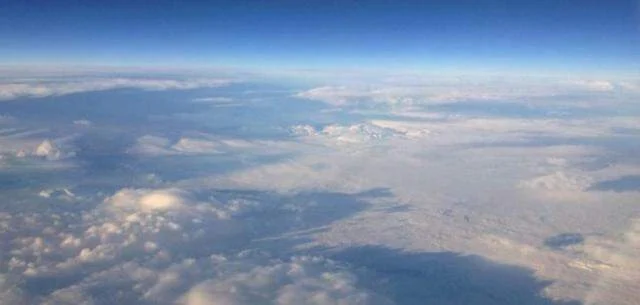The cold of an Icelandic winter did not stop one NASA science aircraft from completing a mission to map glaciers on the island during the past week. NASA’s C-20A, based at the Dryden Aircraft Operations Facility in Palmdale, Calif., flew four radar missions from Keflavik International Airport near Reykjavik, Iceland.
The aircraft carries a precision NASA synthetic aperture radar, developed by the Jet Propulsion Laboratory in Pasadena, Calif., that uses a technique called interferometric synthetic aperture radar (InSAR) to detect and measure very subtle deformations in Earth’s surface.

The Icelandic mission is designed to study how movement of the glaciers in winter differs from their movement in summer when there is considerable meltwater that reaches the bed of the glacier, according to principal investigator Mark Simons, a professor of geophysics at the California Institute of Technology in Pasadena.
“This study will help scientists better understand the basic processes that control the fate of glaciers as climate changes. In so doing, this study contributes to our understanding of glacier behavior world wide and will aid in improving our estimates of rising sea levels,” said Simons.
“We all recognize that the techniques being developed in this project both observationally and in terms of modeling should have significant impact on studies of the cryosphere around the globe, as well as on our planning for a future U.S. L-band radar satellite,” he added.
Brent Minchew, a Caltech graduate student, is assisting Simons in the Icelandic glacier research.
The Uninhabited Aerial Vehicle Synthetic Aperture Radar (UAVSAR) is installed in a specialized pod mounted on the belly of NASA’s aircraft. Each of the four flights, totaling more than 26 hours, was flown over the same path as a summer 2012 study of surface ice on glaciers.
Prior to the first science mission being flown Jan. 31, the C-20A had to be de-iced after being parked outside overnight due to lack of hangar space. When the crew arrived to prepare for flight, the “aircraft looked remarkably like a glazed donut,” quipped NASA C-20A project manager John McGrath.
The C-20A, which is a military version of the civilian Gulfstream III business aircraft, and its specialized equipment arrived back in the U.S. Feb. 6.






